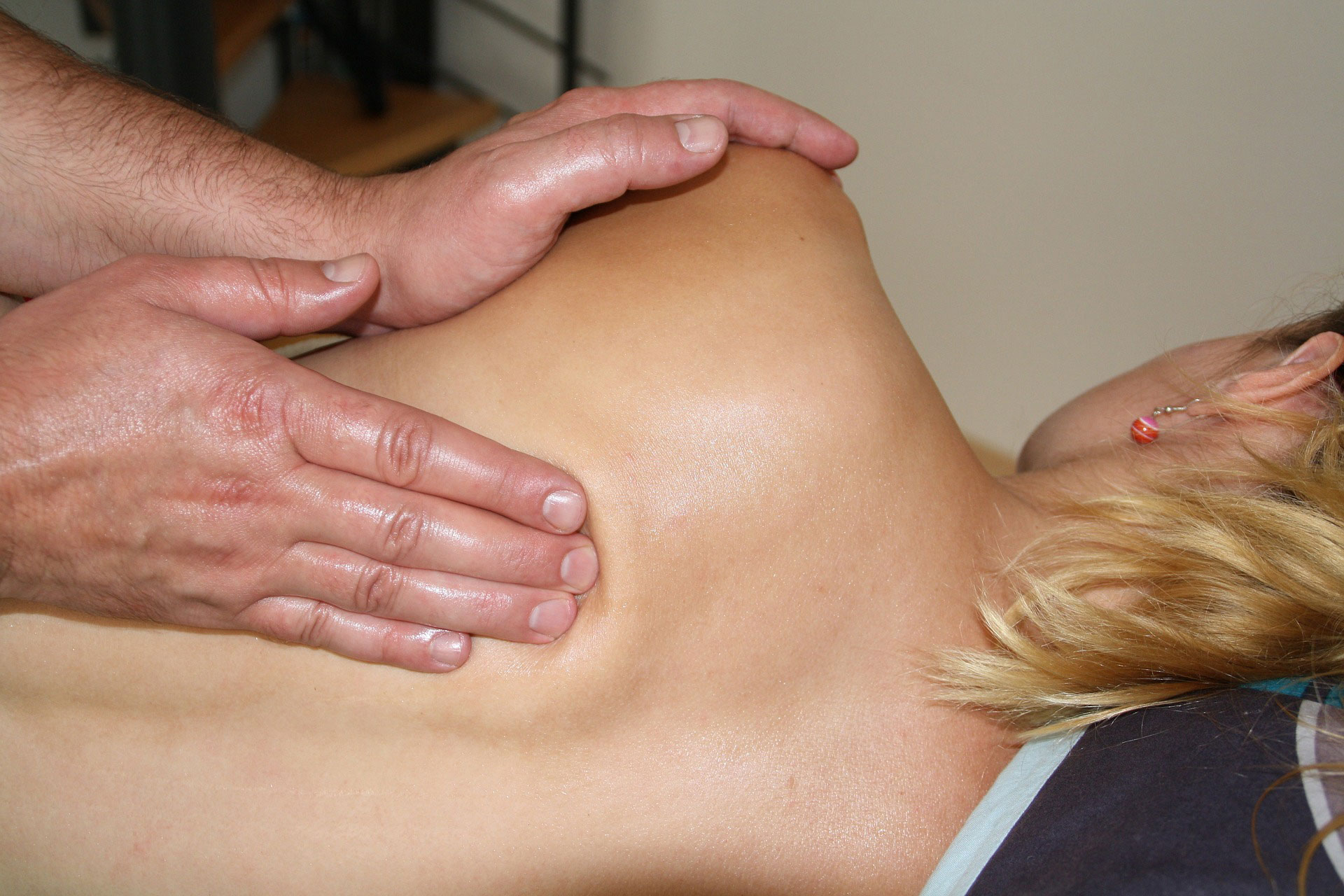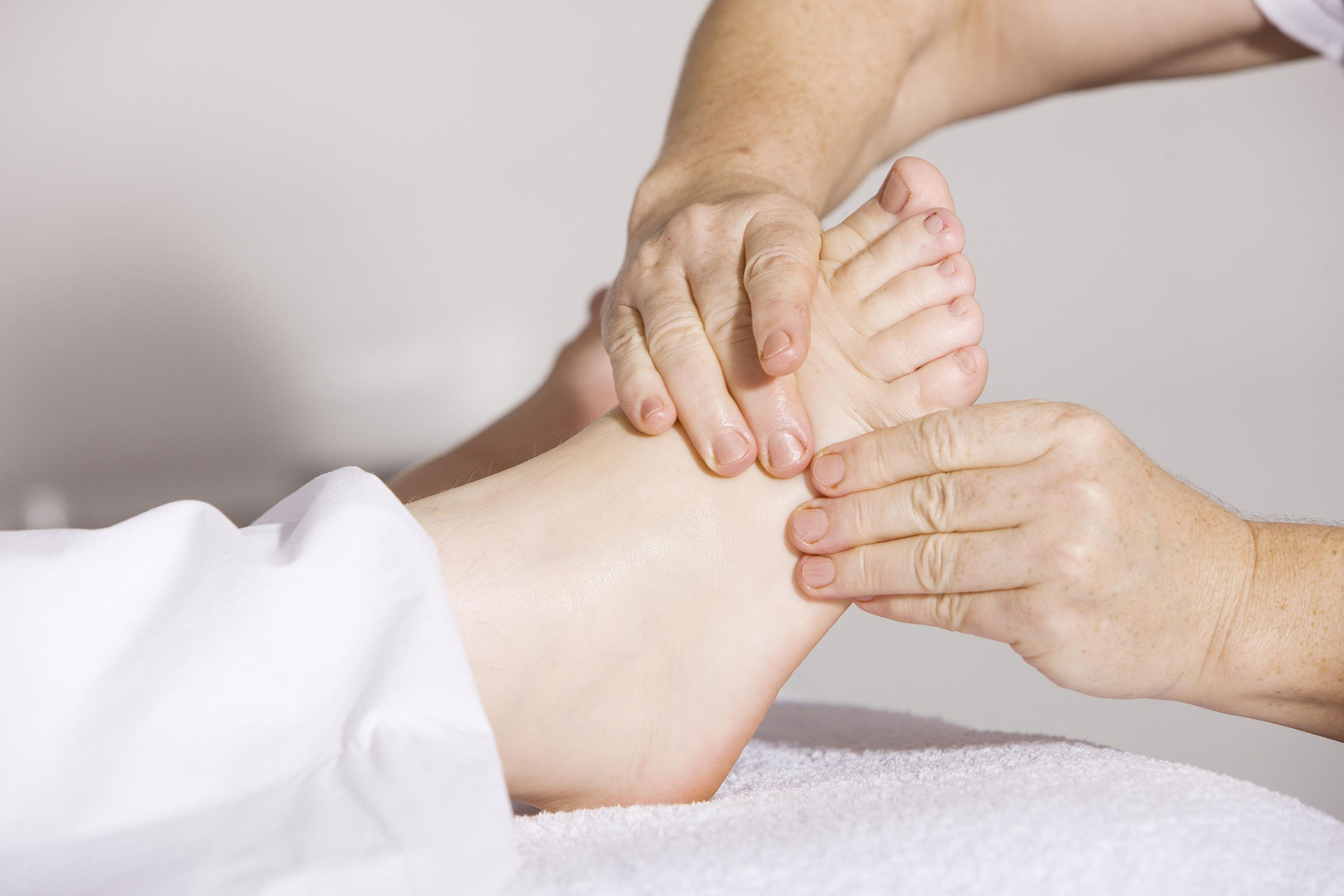The most common reasons for going to physical therapies
You’ve heard about physical therapy, but do you know why it’s such a crucial health tool for so many people? Whether managing chronic diseases, recovering from an injury, or seeking to improve mobility, individuals turn to physical therapy for diverse reasons. Read on and discover why physical therapy might just be the solution you, or someone you know, needs.
Musculoskeletal pain
Musculoskeletal pain, encompassing any discomfort or pain in muscles, ligaments, tendons, and bones, can severely hamper a person’s quality of life. It’s one of the main reasons people seek physical therapy. The experts associated with Pursuit Physical Therapy can explain how, when experiencing musculoskeletal pain, physical therapy offers a non-invasive and often very effective solution. It focuses on strengthening the affected body parts and increasing flexibility, which in turn helps to alleviate pain and prevent future injuries.

Therapy programs are often individualised, addressing the specific pain points and physical conditions of the patient. Techniques may include manual therapy, exercises, and education about body mechanics. Physical therapists also guide adapting to daily life with musculoskeletal pain and on strategies to manage it at home. This holistic and personalised approach makes physical therapy a preferred choice among many suffering from musculoskeletal pain.
Post-surgery rehabilitation
Post-surgery rehabilitation is another critical reason people seek physical therapy. Surgical procedures, while often necessary for treating certain conditions or injuries, can leave patients with decreased mobility, strength, and overall function. The body needs time and specific exercises to heal and return to its pre-surgical state. Physical therapy comes into play here, providing structured exercise programs and manual therapies tailored to the individual’s specific surgical recovery needs.
Therapy can help to restore strength, improve mobility, and reduce pain more effectively than rest alone. It also minimises the chances of post-surgical complications like blood clots, joint stiffness, or poor wound healing. Moreover, physical therapists can help patients adapt to new physical limitations or changes in body function after surgery, promoting a safer and quicker return to daily activities. Therefore, post-surgery rehabilitation through physical therapy is essential for a comprehensive recovery strategy.
Sports injuries
Playing sports, especially as a professional, is a great challenge to your body and can result in various injuries. The most common ones are the following:
- Sprains and strains
- Fractures
- Tendonitis
- Dislocations
- Concussions
- Ligament injuries
- Rotator cuff injuries
- Muscle contusions
- Stress fractures
- Meniscus tears
- Shin splints
Physical therapy plays a pivotal role in restoring mobility, reducing pain, and preventing future injuries by strengthening the damaged areas. It’s also crucial for reestablishing the body’s harmony and coordination, which are often disrupted due to injury. Chiropractors develop a personalised healing approach that may comprise specific exercises, manual therapy, and education on body mechanics.
Moreover, therapy helps athletes regain confidence and mental strength, which is essential for their return to the game. Therefore, therapy after sports injuries is not only beneficial but often indispensable for comprehensive rehabilitation and a successful return to athletic activity.
Rehabilitation after an accident
Accidents can lead to a range of physical traumas, from minor injuries to severe, life-altering conditions. Physical therapy becomes essential in the aftermath of these incidents, promoting recovery and enhancing quality of life. Accidents often result in physical impairments such as loss of strength, mobility, and flexibility, which can be addressed effectively through targeted physical exercises, manual therapy, and therapeutic modalities administered by a physical therapist.
Additionally, accidents can also lead to neurological issues due to head injuries or spinal cord damage. Therapists are trained to manage these scenarios, helping patients regain lost skills and improving their functional abilities. Often, accidents can also result in psychological distress, fear, or anxiety. Therapists provide emotional support and teach coping strategies, allowing patients to regain confidence in their bodies and abilities. The ultimate goal of therapy post-accident is to help individuals return to their previous levels of functioning and independence, thus improving their overall well-being and quality of life.
Chronic pain management
Chronic pain, unlike acute pain, persists for months or even years, significantly affecting an individual’s overall health and well-being. Therapy emerges as a key strategy in managing such persistent discomfort. Physical therapy offers a non-pharmacological approach, helping individuals manage their pain sustainably and effectively without reliance on medication, which can often come with side effects. Therapists use a variety of techniques, such as manual therapy and specifically tailored exercises, to decrease pain and improve function and mobility.
Furthermore, they provide essential education on body mechanics and self-management strategies. This empowers people with chronic pain to lead a healthier, more comfortable life. Therapy also addresses the psychological effects of chronic pain, such as anxiety and depression, thereby offering a comprehensive approach to managing this condition.
Neurological disorders
Neurological disorders, encompassing conditions like stroke, spinal cord injuries, Parkinson’s disease, and multiple sclerosis, can significantly impact an individual’s motor functions, balance, coordination, and even cognitive abilities. Physical therapy is often sought for these disorders to help manage symptoms and preserve the quality of life. Therapists use targeted exercises and therapeutic techniques to improve mobility, strength, balance, and coordination.
Also, they aid in training for walking, climbing stairs, or transitioning from one position to another. Therapy can also enhance cognitive function and address speech and swallowing difficulties that neurological disorders often incur. This treatment becomes a cornerstone in managing neurological disorders and living a fulfilled, productive life despite these challenges.
Repetitive strain injuries
Repetitive Strain Injuries (RSIs) are conditions caused by placing too much stress on a joint, and they occur from repetitive motions or from maintaining the same position for long periods. These injuries, including conditions like carpal tunnel syndrome or tennis elbow, often lead to persistent pain and can severely impact daily activities.
Physical therapy plays a crucial role in treating RSIs, primarily by strengthening the affected area to support the joints better, improving flexibility to reduce stiffness, and enhancing posture to alleviate pressure points. Therapy also educates patients on adjusting their environments and behaviours to prevent further strain. Hence, individuals suffering from RSIs turn to physical therapy to relieve pain, restore function, and prevent the escalation of these conditions.

So, whether you’re dealing with chronic pain, recovering from an accident or surgery, managing a neurological disorder, or nursing a sports injury or repetitive strain injury, physical therapy could be the key to your recovery. It’s an effective strategy to regain mobility, manage pain, prevent future injuries, and ultimately enhance your quality of life. Always remember that your health journey is personal, and you deserve care that’s tailored to your unique needs.
![[AD] We went to the newly opened Cha Sha Kingston a couple of weeks ago, and wow — taste bud adventure unlocked! The boys devoured the masala fries and chicken tikka rolls, while we couldn’t get enough of that epic kebab butter curry 😍🍛.
It’s amazing value for food this tasty (and everyone left happy and VERY full!).
Delicious food, vibrant vibes and incredible value — the perfect combo for your next meal.
📍Cha Sha Kingston
43 Surbiton Road, KT1 2HG
🌐 chasha.co.uk
Other Cha Sha locations in Birmingham, Ilford, Southampton and Wembkey
#ChaSha #ChaShaKingston #KingstonEats #FoodieFinds #UKFoodie #FoodReview #KingstonUponThames #FamilyEats #FamilyDining #FoodieKids](https://suburban-mum.com/wp-content/uploads/2016/02/574770541_18560351146016840_6855048070839528040_n-180x320.jpg)

![[AD] We’re a cricket-mad family, so we’re buzzing that @thehundred is back this August! 🏏🔥
To get ready, M tried out the official FREE Activity Pack — and it’s brilliant! 🙌
Packed with fun games, creative challenges and sporty tasks, it’s perfect for getting kids hyped whether you’re at home or on the go.
👉Download yours now (link in bio)
@londonspirit @ovalinvincibles #EveryMomentCounts #TheHundred
#EnglandCricket #CricketFamily #TheHundredCricket #LondonBloggers #Cricket #CricketIsLife #kidsfun](https://suburban-mum.com/wp-content/uploads/2022/11/505472555_18531279601016840_7092520074819907569_n-180x320.jpg)



![[AD - Press visit]
We enjoyed the glorious sunshine this weekend with a trip to Brighton. We went on the @brightoni360official which is right by the sea front.
The i360 pod take a slow journey up, allowing you to take in views across Brighton and the South Downs 450ft above ground. There’s a bar inside with drinks and snacks available to purchase and the experience lasts 25 minutes.
Afterwards, we headed to the open air roller rink for a roller skating session!
The roller rink is:
⭐ Suitable for over 5s
⭐ £6.50 if you have your own skates or £9.50 if you need to hire them
⭐ 45 minutes per session
Full details to visit the i360 + skating
📍 Brighton i360, Lower Kings Road, Brighton BN1 2LN
🚗 Parking nearby (we parked in the Regency Square Car park)
🎟️ Prices start from £25.40 for an adult and £16.90 for a child
🕐 Opening hours are currently Sun-Fri 10.30am-18.30pm and until 19.30pm on Saturdays
☕️ Bar inside the i360, cafe and gift shop
Book tickets here:
https://tickets.brightoni360.co.uk/tickets/?_ga=2.195305772.1869001490.1689671753-1757164059.1689671753/#events?eventid=157](https://suburban-mum.com/wp-content/uploads/2015/04/417980235_313576471048632_3682382982231216432_n.jpg)

![[AD] ***Summer of fun at Barracudas Activity Camps!****
There is plenty for kids to do at @barracudas_activity_day_camps
From Tennis, Archery, Swimming, Motor Sports and more you can be sure that there will be something for kids aged 4.5-14. ⚽🏈🥅🎾🏓🏎️🏹🏊♂️🏉
You can book on a day by day basis - so it can fit in with any other days out/activities you have planned and there are early drop off and late pickup options available. Barracudas are also Ofsted registered so you can use your Childcare Vouchers too.
⭐⭐⭐Get £20 off a week or £4 off a day using my discount code: MARIA20⭐⭐⭐
#BarracudasActivityDayCamp #BarracudasActivityCamp #BarracudaAmbassadors #SummerHolidays #SchoolHolidays #Summer2023 #SummerCamp #DayCare #Camp #KidsCamp #surreymummy #surreymums #SummerOfFun #ActivityCamps #HolidayCamps #Childcare #SchoolHolidays #schoolholidaycamps](https://suburban-mum.com/wp-content/uploads/2024/07/353583570_625625966167953_545896259645102575_n.jpg)



![[AD] We have some super exciting news...we have been chosen to be Laser Quest Ambassadors, and the boys are over the moon!
We are really lucky that our local Laser Quest (@laserquestkingston) is just around the corner from us. It means we can pop in of a weekend or anytime during the school holidays, and with summer just around the corner, I know Laser Quest will be one of our go-to places for some family fun.
As well as games of Laser Quest, there are also VR experiences and arcade amusements too. To find out a bit more about how Laser Quest works, you can read my blog post: https://www.suburban-mum.com/laser-quest-kingston/ (clickable link in bio)
Don't forget to keep an eye out for our Laser Quest posts - I'm going to be giving away two family passes to use at Laserquest Kingston!
If you can't wait and want to head down to Laser Quest to try it out, use the code SUMMER30 for 30% off your booking. The code is valid from now until the end of August 2023 and can be used on Laser Quest games and birthday party bookings.
#LaserquestAmbassador #Laserquest #LaserquestKingston #ActivitiesForKids #FamilyFun #DaysOutWithKids #Lasertag #LaserquestVR #Kingston #ThingsToDoInKingston #SurreyFamilyDaysOut #ThingsToDoWithKids #RainyDayFun #SurreyMummy #SurreyLife #LifeWithKids #LifeWithBoys #familyfunday](https://suburban-mum.com/wp-content/uploads/2015/04/353230107_797358078406942_2405522556733455165_n.jpg)

![[AD] The sun has finally made an appearance and the boys have been making the most of it by spending it
in the garden.
They’re go-to is always football and they’ve been trying to improve their aim and accuracy with the new Messi Foldable Footlball goal from the #MessiTrainingSystem range.
I love the fact the goal is foldable, making it easy to store away when not in use. It is also lightweight so you can effortlessly pack it up and take it to the park or to a friend’s house.
The Messi Foldable Football Goal retails at £36 and can be purchased from @argos
You can read my full review here: https://www.suburban-mum.com/messi-foldable-football-goal/
#TrainLikeMessi #FoldableFootballGoal #FootballSkills #OutdoorFun #LionelMessi #LeoMessi #FootballAtHome #OutdoorKids #JustGetOutside #OutdoorsAndFree #ScreenFreeKids #WhateverTheWeatherKids @flair_gp](https://suburban-mum.com/wp-content/uploads/2024/07/341194882_615024710178056_41977149395989448_n.jpg)

![[AD] We are absolutely thrilled to announce that we are Barracuda Ambassadors again this year.
With Easter just around the corner, the boys were sent the @barracudas_activity_day_camps new camp kit in preparation for the school holidays.
There’s a wide range of activities for kids aged 4.5 - 14 including Tennis, Archery, Basketball, Arts & Crafts and more.
If you like the sound of Barracudas, find out more over on their website. You can also save £20 a week or £4 a day, using my discount code: MARIA20](https://suburban-mum.com/wp-content/uploads/2015/04/336812306_765234558514317_685553691647241974_n.jpg)


![[AD - Gifted]
Last weekend we were invited to try out @tsarettaspice’s new Bottomless Brunch menu and I can tell you it was thumbs up all round!
There’s a good choice tapas on offer from Punjabi fish fingers, Indo Chinese Chicken to Spiced Lamb Scotch Eggs and Manchurian Cauliflower (which was amazing!)
If you’re local to Twickenham and fancy giving them a try here’s are the details.
Tsaretta Spice Bottomless Brunch
⭐️£37.50 per head for bottomless Prosecco or cocktail of the day
⭐️£55 per head for bottomless Champagne
⭐️ Food included: 4 tapas selections and dessert or 2 tapas selections, a pav or naanwich and dessert
⭐️ Non-alcohol brunch is also available
Tsaretta Spice
55 Church Street
Twickenham
TW1 3NR
You can also read our full review over on the blog (link in bio)](https://suburban-mum.com/wp-content/uploads/2015/04/334565436_5960402314015030_663031098700829518_n.jpg)



